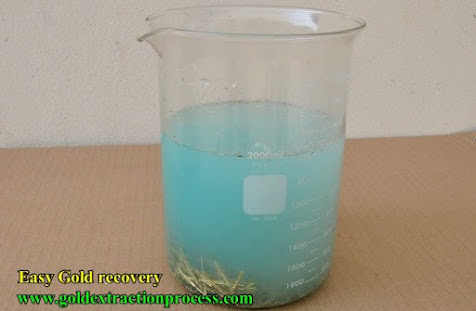How To Mine Gold From Electronics components old appliances.
The process involves dismantling the electronic devices to recover valuable metals, such as gold, silver, and copper, which can be sold for profit.
One method of e-waste recycling is to use a process called "shredding," which involves breaking down the electronic devices into small pieces with a shredder or hammer mill. The resulting pieces are then sorted by a machine or by hand to separate the valuable metals from the non-metallic materials.
Another method is called "chemolysis" which involves the use of chemicals to dissolve the metals, leaving the non-metallic materials behind. This method is often used to recover metals from circuit boards and other small electronic compon
What pieces contain gold from electronic components?
Gold can be found in a variety of electronic components, including:
Connectors: Gold is often used in connectors because of its excellent conductivity and resistance to corrosion.
Circuit Boards: Gold is commonly used as a thin layer on the surface of circuit boards to connect different components.
CPUs (Central Processing Units): Gold is used as a thin layer on the surface of CPUs for the same reason as circuit boards.
Memory chips: Gold connectors are used to connect memory chips to the motherboard
Gold plated pins: Gold is often used to plate the connectors or pins found on electronic components such as memory and graphics cards.
Gold plated connectors: Gold connectors are used to connect electronic devices to power supplies, hard drives, etc.
It's important to note that not all electronic devices will contain gold, and the amount of gold present in a device can vary widely. Additionally, the gold recovery process is not simple and it requires specific knowledge and equipment.
How Much Gold Plated Connectors?
The amount of gold present in gold-plated connectors can vary widely depending on the thickness of the gold plating and the type of connector.
Typically, the thickness of gold plating on connectors ranges from 0.00005 inches to 0.003 inches. At the lower end of this range, the connector will contain only a small amount of gold, while at the higher end, it will contain a significant amount.
It is also important to note that connectors can be plated with other metals such as nickel or palladium, which will decrease the amount of gold present.
The weight of gold in connectors is measured in troy ounces, which is a unit of weight used for precious metals. One troy ounce is equal to about 31.1 grams.
It is difficult to estimate the exact amount of gold present in a connector without physically analyzing it, but it is commonly measured in the range of micrograms to milligrams per connector. To extract the gold from connectors, it is necessary to dissolve the connector in acid and then electroplate the gold out of the solution.
It is worth mentioning that gold-plating is not common in all connectors, and it is usually used in high-end electronic devices and specialized applications.
How To Extraction gold use Nitric Acid
The simplest method is using 68% Nitric Acid mixed with water in a 1 to 2 ratio. It may take time to vary depending on the size of the material.
In some cases. If gold is mixed evenly in the alloy and at a low enough concentration, you can use plain nitric acid to dissolve away impurities. However, if the gold is more pure (or is an external plating), what actually happens is that the nitric acid tries to dissolve everything, but the gold blocks it from coming through. In that case, you purify an outer layer, but the internal layers are not pure because they are protected by an insoluble layer of gold.
The simple gold extraction method using nitric acid HNO3 is the simplest. This method is suitable for gold-plated metal materials. And the gold plated metal must be dissolved by nitric acid to form a solution.
Metabisulfite, I managed to get the gold settle as sediment at the bottom of the Aqua regia solution.
I slowly poured the Sodium Metabisulfite in until reaching saturation level, or until the Sodium Metabisulfite stopped dissolving. At this point the brown sediment of gold could be seen.
I let the solution settle for 30-60 minutes.
I slowly poured out the chemical solution, ensuring the sediment remained.
Challenges and opportunities in the recovery of gold from electronic waste.
Rapid global technological development has led to the rising production of electronic waste that presents both challenges and opportunities in its recycling. In this review, we highlight the value of metal resources in the printed circuit boards cpu gold plated electronic components. commonly found in end-of-life electronics, the differences between primary (ore) mining applications and secondary (‘urban’) mining, and the variety of metallurgical separations, in particular those that have the potential to selectively and sustainably recover gold from waste.
After this chemical process, you get low purity gold scrap. due to chemical contaminants And the gold used for plating may not use all 99% gold.
we need to bring Low percentage gold refinement Achieving a purity of more than 99 percent can be achieved by using a Aqua Regia
works best. And can also bring the process to the era to use various low percentage gold refinements
Aqua regia is a mixture of hydrochloric acid and nitric acid at a ratio of either 3 to1 or 4 to 1. It is a reddish-orange or yellowish-orange fuming liquid. The term is a Latin phrase, meaning "king's water". The name reflects the ability of aqua regia to dissolve the noble metals gold, platinum, and palladium. Note aqua regia will not dissolve all noble metals. For example, iridium and tantalum are not dissolved.
It's important to note that this process can be dangerous, as both nitric acid and hydrochloric acid are highly corrosive and can cause serious injury if they come into contact with skin or eyes. Therefore, it's important to take proper safety precautions, such as wearing gloves and goggles, when working with these chemicals.
Metabisulfite, I managed to get the gold settle as sediment at the bottom of the Aqua regia solution.
I slowly poured the Sodium Metabisulfite in until reaching saturation level, or until the Sodium Metabisulfite stopped dissolving. At this point the brown sediment of gold could be seen.
I let the solution settle for 30-60 minutes.
I slowly poured out the chemical solution, ensuring the sediment remained.
You can sell the recovered gold to gold buyer, or you can keep it for your own use. The value of the gold will depend on its purity and the current market price of gold. Good luck to all of you with gold extraction and riches.





.JPG)








0 ความคิดเห็น: